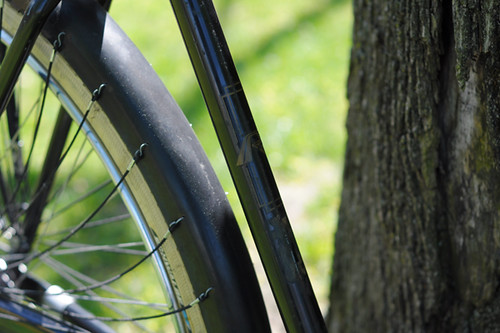I've had my Raleigh Tourist for close to 3 years now and, not counting the brake pads, the only wear on the bike over the course of that time has been to the aftermarket dress guards. These dress guards were acquired new old stock from a connection in Portugal. They are very simple - essentially a bunch of elasticised cords. And I love them: the simplicity of the design does not detract from the elegant form of the iconic loop frame, while being sufficient to do its job. Unfortunately, over time the cords seem to have lost their elasticity and are now kind of saggy. Some have even begun to disintegrate and I've had to cut them off. I am surprised that they've lasted such a short time, and it's a bit of a pain because the number of holes they require in the fender is unique to them. I will have to bother the person who gave them to me for another set, or attempt to make my own.
Assuming that my experience is not a fluke, it might explain why so many vintage bicycles are found with holes in the fenders but no dress guards: Possibly, this accessory had an inherently short life span due to the elastic degrading. I assume the elastic is natural rubber, which would make it sensitive to heat and humidity - same reason it is so rare to find intact original rubber grips.
Those who are making dress guards today (I know there are a few of you out there now) might want to keep this in mind. I'd be curious to know what types of cords you use and how they have held up. If I make my own dress guards, I would like them to last next time!






0 comments:
Post a Comment